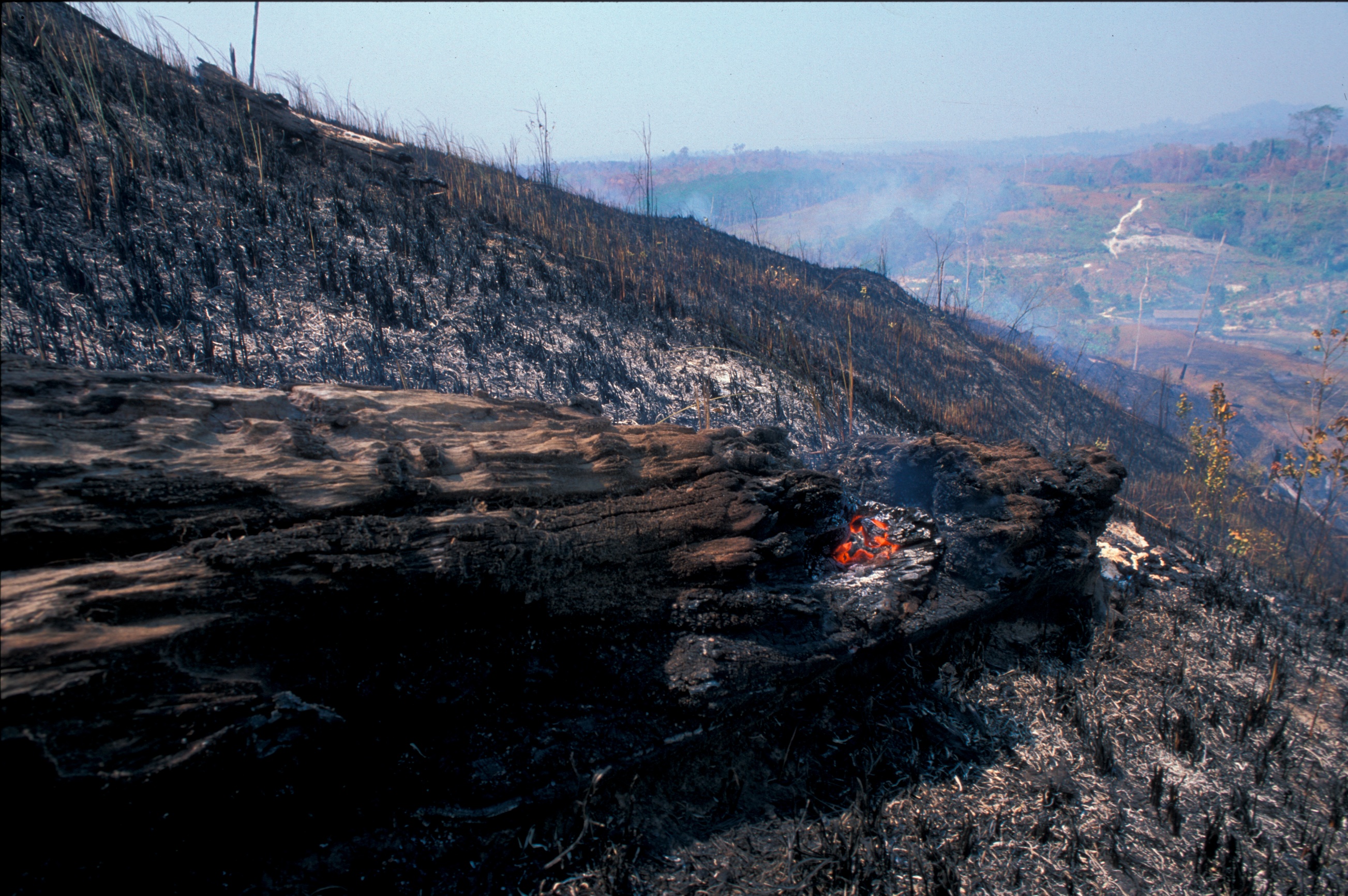Jago Wadley on defining Indonesia’s deforestation moratorium
In March this year, Indonesia and Norway signed a Letter of Intent (LoI) on REDD+ an ambitious scheme to compensate countries such as Indonesia for reducing emissions from deforestation and degradation.
Under the agreement, Norway has pledged $ 1 Billion fund – a mix of REDD preparation activities in Indonesia, such as policy reforms and institutional strengthening, and also to make performance-based payments for measurable and verifiable emissions reductions in Indonesia’s forestry sector.

View of an illegal logging camp on Salawati Island, one of the Raja Ampat Islands, West Papua, Indonesia. Copyright EIA/Telepak
A major plank of the phased agreement is a so-called “moratorium” on the issuance of new forest conversion permits over the next two years. The exact text of the LoI states that Indonesia will implement “A two year suspension on all new concessions for conversion of peat and natural forests”.
The suspension, or moratorium, is due to be implemented from January 2011, and is hoped to offer much needed breathing space for forests while the government identifies already “degraded” lands to be used for new plantations instead of forests and peat lands, and generally reforms its forestry and agriculture sectors.
The world is placing its hopes on this initiative, and is watching with much interest and expectation.
However, signs are emerging that Indonesia is seeking to substantially water down the spirit, and the letter, of the moratorium, at least in relation to global expectations.
Not long after having signed the LoI with Norway, Indonesian officials, including the Minster of Forestry, began describing the moratorium as applying to “primary forests”, not “natural forests” as is written in the agreement.
“What is the difference”, I hear you say? A lot.
If a forest has been logged, it is not longer “primary” – despite remaining viable natural forest. If Indonesia limits the moratorium to cover merely primary forest, lots of natural forest will be permitted for conversion – fundamentally breaking the spirit of the country’s agreement with Norway – and placing the political will of Indonesia to honour its agreements on forests in serious doubt.
A Presidential Instruction, supposed to be issued in October, and which was to legally institute the Moratorium, is still being drafted.
Mixed messages from Indonesian officials on the scope and scale of the moratorium have persisted, with recent news articles suggesting that it may be further weakened.
Special interests have generated much argument over the definitions of “degraded lands” and “natural forest” – arguments that threaten to add to the opacity that all too often colours the legal base of forestry and forest governance in Indonesia. One forestry official close to Indonesia’s REDD+ negotiations with Norway (but since arrested for corruption in Forest Ministry procurement deals) has stated that “Lots of people want this policy, and the planned moratorium, to fall through, often by using legal arguments against the definition of natural forests”. The same official also implied that none of these definitions will be clarified in any Presidential Instruction that does emerge, further exacerbating policy uncertainty.
In October, The Jakarta Post reported that “the moratorium will not be countrywide but limited to the three provinces … – Papua, Kalimantan and Aceh. It appears agricultural expansion will be allowed in other provinces and outside the designated primary forest and peatland areas in the three key jurisdictions, according to the minister’s comments.”
More recently still, Hadi Daryanto, the new Director General in the Ministry of Forestry reportedly explained that “the government would only halt conversions of primary forests and peatlands, not the productive forests allocated for businesses.”
Hadi reportedly informed the Jakarta Post that “the government had allocated up to 41 million hectares as so-called special forest areas.”
Hadi Daryanto cites the example of the Medco Group, Indonesia’s biggest oil and gas company, that has aggressively moved in on biofuels sector in anticipation of increased demand in polluting economies such as the US and EU. Medco has been granted 170,000 hectares of industrial timber estates in Merauke, Papua, which it intends to use for wood pellet production. Burning forests for energy is considered to be “carbon neutral” by traders of carbon offsets credits.The suspension of “all new concessions for conversion of peat and natural forests” is clearly looking unclear – if news reports are accurate. Let’s hope they are not.
Indonesia always intended to exempt all companies already operating in their concessions from the moritorium. This includes virtually the entire pulp and paper sector, and many of the big listed palm oil plantations companies.
Effectively, any company that began operations before January 2011 is exempted.
Many analysts, including myself, expect every bulldozer in the country to be fully employed clearing forests over the next two years.
Any further watering down of the moritorium, if as bad as implied in media reports, would be to render it largely ineffective. The world will see what happens.

